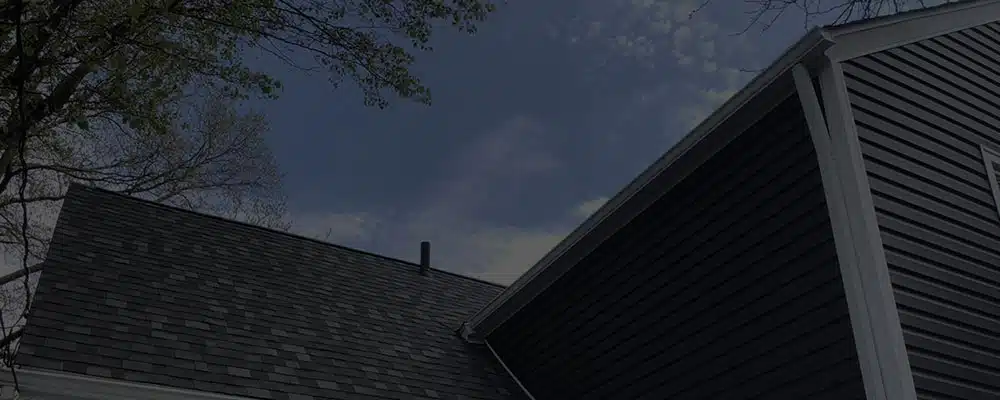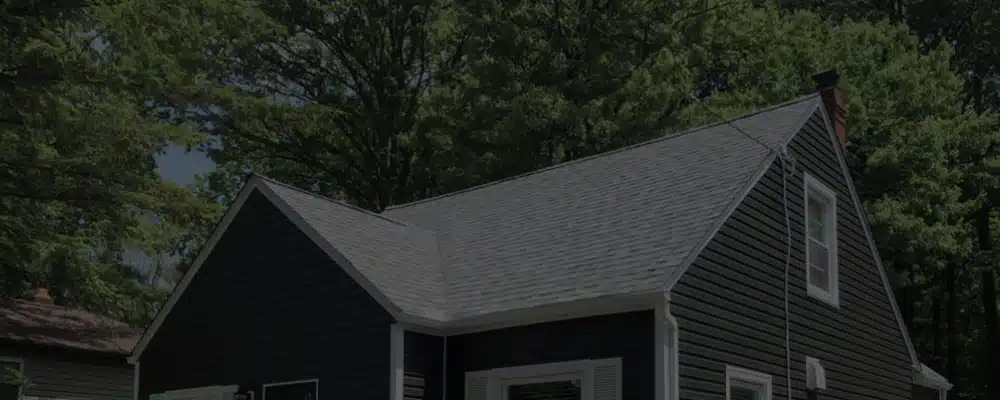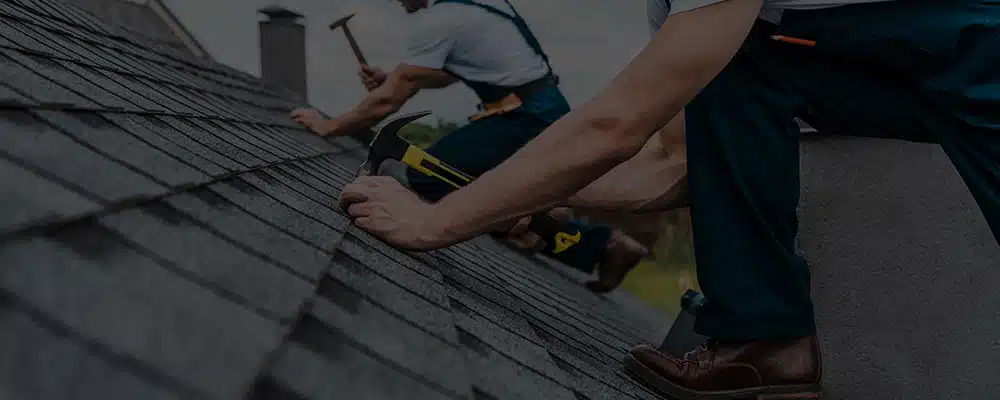Curling shingles show that your roof is sustaining damage and you should consider roof repair or even replacement before the situation worsens. Let’s know more about curling shingles, what causes them, and how to fix them.
Roofing Shingle Damage
There are different types of shingle damage. Many or all of these types of damages can exist at the same time because their causes are more or less the same.
Curling Shingles
Curled shingles look like their edges have turned up while the central part is sinking.
Cupping Shingles
Some shingles look like their central part is turning up and the edges are in their original positions. The whole shingle appears in a concave shape.
Cracked Singles
Shingles can crack due to many reasons like storms, debris falling on the roof, trees nearby the roof, moisture, and others.
Causes Of Curling Shingles
Poor Ventilation
Among the biggest causes of curling shingles is poor ventilation. Proper ventilation ensures a cycle of proper airflow with sufficient air intake and air exhaust.
In winter, warm moist air is created due to the people living in the house, appliances, cooking, and the use of heating systems. This warm, moist air travels upward to the attic.
When the warm air reaches the attic in houses where the attic ventilation is insufficient, due to the cold temperature, the air condenses on the decking, nails, rafters, and others.
This condensation can make the decking to swell or move. This can affect the shingles. They will appear cupped and curled.
The moisture from condensation also rots the decking. Over time, the decking might become too weak to hold the weight of the roof.
Moreover, in severe cases of condensation, water might drip and dampen the insulation. This will also cause wood rot, mold, and other issues associated with moisture. When decking rots, it might not properly hold the nails of shingles leading to more curling and cupping of shingles. Plus, shingles will become loose as well. This means even milder wind gusts might tear away the shingles.
In summer, the attic becomes much hotter than the outside due to poor attic ventilation. Moisture is still generated in the house normally, which reaches the attic. This moisture and hot temperatures in the attic cause roof deck damage and curling and cupping of shingles. Moreover, a hotter attic makes things harder for the cooling system. It works for longer periods which creeps up the energy bills.
Moisture
Moisture is the enemy number one of roofs and there are many ways by which moisture can damage your roof and lead to curling shingles among other forms of damage. One way is due to poor ventilation as mentioned above.
In some cases, when the old roof is removed during roof replacement, moisture is absorbed into the decking. So, after the installation of the new roof, it slowly damages the decking. Due to this, the decking might shift or rot which can cause curling and cupping shingles.
Similarly, if the felt underlayment absorbs moisture due to improper installation or wind-driven rain, it will also make the shingles curl and cup. Keep in mind that when shingles curl, cup, or loosen, they become more prone to damage by rain, winds, and storms.
Improper Installation
Even though improper roof installation also includes poor ventilation, it encompasses other mistakes as well. For instance, if an installer doesn’t use the correct nails for the shingle type, it will allow moisture into the underlayment. The curling of shingles is common with this kind of moisture issue.
Moreover, some roofers don’t install the shingles of the same batch on the roof. This can sometimes, allow tiny spaces between the shingles from where moisture seeps into the roof.
In some cases, tar lines are not properly aligned. Tar lines are the adhesive strips on shingles. When not aligned correctly, the shingles won’t adhere to the underlayment and will curl or even fall off over time.
Multiple Layers Of Shingles
Installing multiple layers of shingles is not common and it’s because multiple layers can do more bad than good. In this process, a new layer of shingles is installed on top of the older shingles to save costs and increase the durability of the roof. But it’s not recommended by most roofers because as we mentioned it can backfire as well.
Even before the installation of multiple layers, you need to ensure that your house structure and decking are strong enough to hold the extra weight of the additional layers.
If your house can support multiple layers and you have them installed, the second layer of shingles may notoriously curl and cup. Moreover, these shingles become more prone to damage by weather elements.
Aging
If your roof is old enough, it will begin to show its age. Problems like shingle damage, curling, cracking, loss of granules, and roof leakage may become common. The age of your roof depends on the type of underlayment and shingles you have installed. Many times, you may have to replace the shingles (roof replacement) only if the underlayment is sound.
Asphalt shingles last for 15-20 years depending on the type. So, if your asphalt shingles are older than 15 years, have your roof checked. However, if you have slate roofing, 15 years is a not long time and you should not worry about roof problems until the next 35 years (a total of 50 years). But keep in mind that improper installation can prematurely damage any type of shingles even the durable ones like slate and clay tiles.
How To Fix Curling Shingles?
In most cases, curling shingles require a roof replacement. If the curled shingles are in a small area of the roof, you may get away with the replacement of only those shingles, but it might not fix the issue in case the curling of shingles was happening due to another reason like poor ventilation, improper installation, or decking issues.
So, if you’re seeing that your roof shingles are curling, cupping, and going missing, you should not immediately think of repair, but get the roof inspected so the roofer can suggest the right course of action.
How To Prevent Curling Shingles?
As the only solution to curled shingles is mostly roof replacement, you should learn how you can prevent this problem in the future.
Hire Expert Roofers For Roof Installation And Repair
When you have to replace the roof and you don’t want this issue to happen again, you must look for roofers that are reputed and offer a workmanship guarantee. They may charge a bit more, but it may be worth it.
Clear Debris From The Roof And Gutters
Leaves, tree branches, and debris can end up on your roof after a storm. This can damage the shingles and also allow water to stand on the roof. Debris can also block the gutters which will also stop water from draining.
So, make sure to clean the roof and the gutters after a storm to avoid roof damage. This will also allow you to inspect your roof after a storm and notice any problems that should be fixed.
Conclusion
Curling and cupping shingles is a wake-up call that your roof needs repair or replacement. Hire a roofing contractor Cuyahoga Falls to inspect your roof so you can make the right decision.




